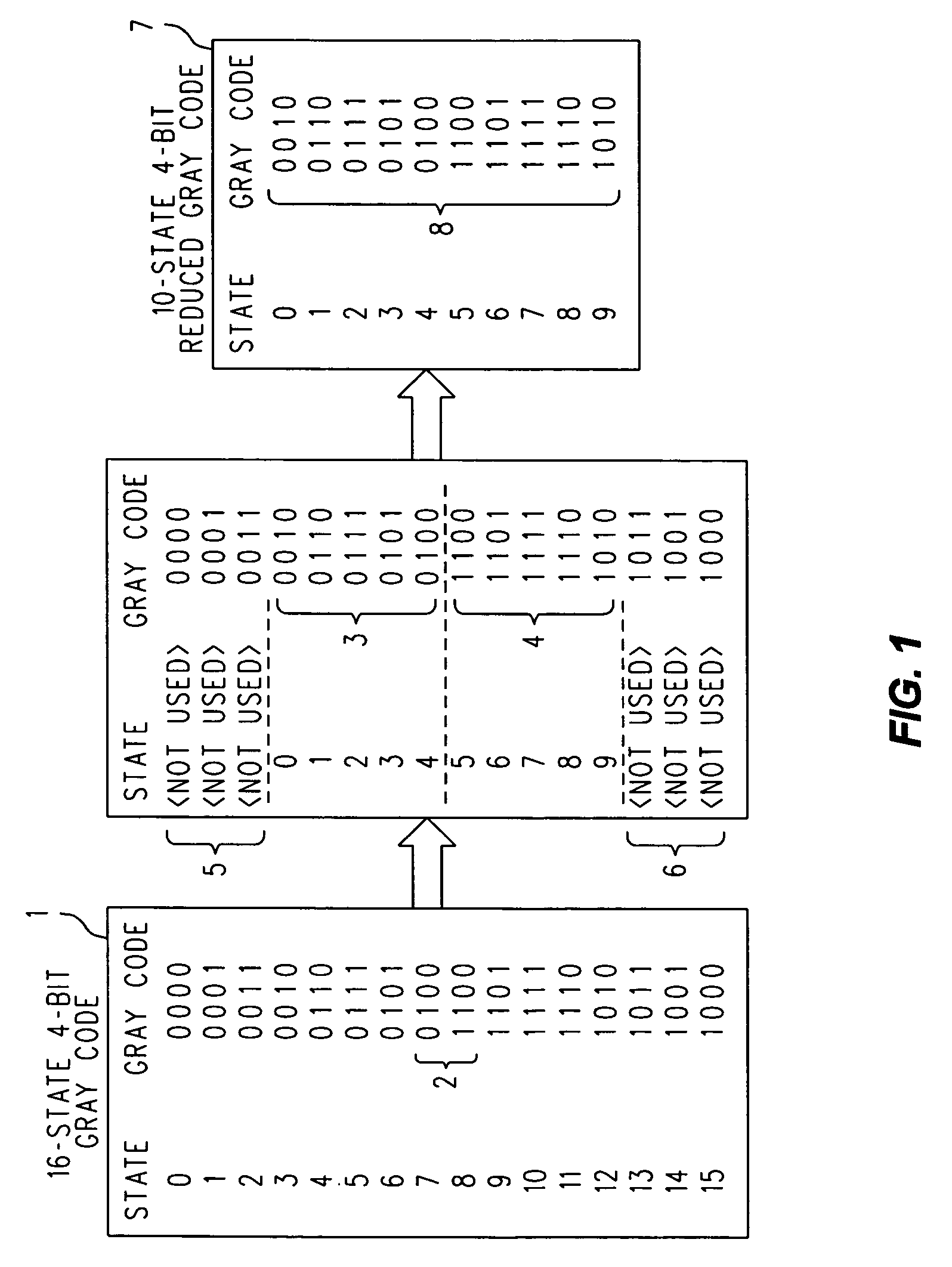Method for generation of even numbered reduced gray codes
a technology of even numbered and reduced gray codes, applied in the direction of code conversion, transmission, electrical equipment, etc., can solve the problem that the usefulness of even numbered reduced gray codes is well precluded
- Summary
- Abstract
- Description
- Claims
- Application Information
AI Technical Summary
Benefits of technology
Problems solved by technology
Method used
Image
Examples
Embodiment Construction
[0009]Let's begin by considering how a reflected binary Gray code of n-many bits and 2n-many states is constructed. Although there are various explanations or recipes, we have robbed the one below from the www.nist.gov web site mentioned earlier.
[0010]One way to construct a Gray code in n bits is to start with one for n−1 bits. Let's say we start with a Gray code for two bits (in this example and those that follow, an ordinal state number (Si) is shown to the left of each Gray code entry):
[0011]
(a)S000S101S211S310
[0012]Now repeat the Gray code for n−1 bits below itself, but in reverse order:
[0013]
(b)S000S101S211S310S410S511S601S700
[0014]Now we append a zero or a one to the left of the first, or top half, and the complement of that to the second, or bottom half:
[0015]
(c) OR (d)S0000S0100S1001S1101S2011S2111S3010S3110S4110S4010S5111S5011S6101S6001S7100S7000
[0016]The results are two reflected binary 3-bit Gray codes. Of course, we could have started with a different 2-bit one (00, 10, ...
PUM
 Login to View More
Login to View More Abstract
Description
Claims
Application Information
 Login to View More
Login to View More - R&D
- Intellectual Property
- Life Sciences
- Materials
- Tech Scout
- Unparalleled Data Quality
- Higher Quality Content
- 60% Fewer Hallucinations
Browse by: Latest US Patents, China's latest patents, Technical Efficacy Thesaurus, Application Domain, Technology Topic, Popular Technical Reports.
© 2025 PatSnap. All rights reserved.Legal|Privacy policy|Modern Slavery Act Transparency Statement|Sitemap|About US| Contact US: help@patsnap.com



